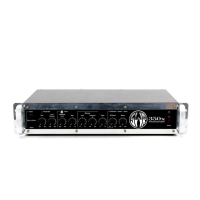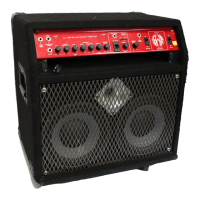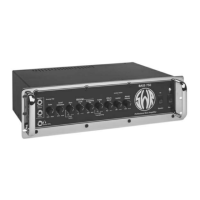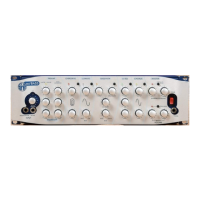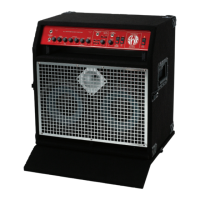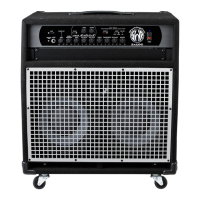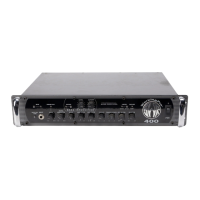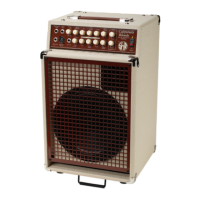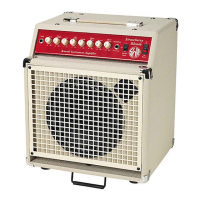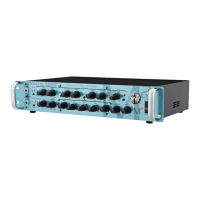550x • 23
Most musical instrument amplifiers on the market today use steel for their chassis, which does not conduct heat as well as
aluminum. The 550x uses an all aluminum chassis and front panel because it has less impurities than steel, is less susceptible
to rust, and is a better conductor of heat. This results in the chassis acting as an additional heatsink, drawing heat away from
heat-producing components inside and thus extending their life. In this manner, we feel we have produced a more reliable
amplifier, but at the same time, the outside of the 550x will get warmer than cases made out of steel.
The one condition you should be aware of is if one or more of the power amplifiers in your unit becomes "over-biased." This
condition can be recognized by turning your amplifier on and letting it sit "idle" (without speakers plugged in and without play-
ing it). If your unit starts getting hot under these conditions, it may be over-biased. This situation should be attended to and can
be easily remedied in about 15 minutes by a qualified service technician. A power amp can become over-biased through con-
tinuous vibration or by any large jolt received in shipping, etc.
FINAL ENGINEERING SUMMARY
The two preamp gain stages utilize a specially-selected 12AX7A. The tone controls incorporate I.C.'s, and the power amp is
designed with extremely high quality bi-polar devices. Each type of device was chosen for its performance and reliability in the
application used. The front panel and chassis of the 550x are comprised of aluminum, because of its superior electrical and
thermal characteristics and light weight. All primary electrical components are U.L. approved, and SWR uses Beldon Cable for
all shielded wire. All units are assembled by hand and individually soundtested in the U.S.A. at our factory in Southern
California.
SUGGESTED SETTINGS
The following page includes examples of tone control options for various styles of music. These settings are intended for use
as a starting point for dialing in your own individual sound, so feel free to make adjustments based on your own playing style,
instrument and speaker cabinet configuration. After you find combinations you like, don't forget to try adding in the
SubWave™…as much as you feel is necessary.
